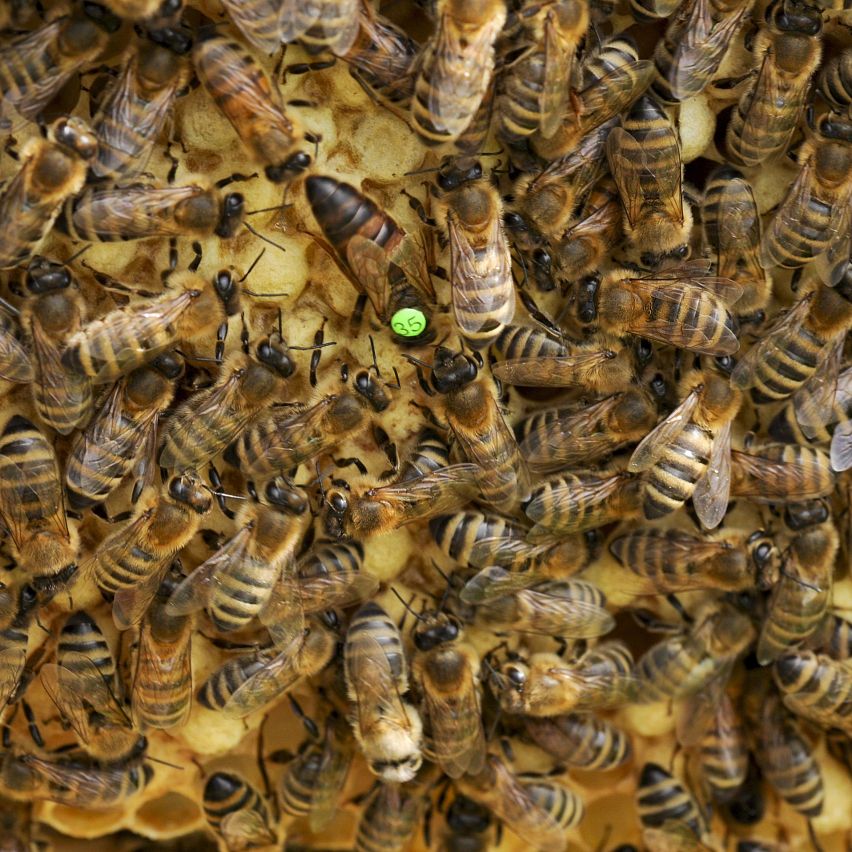Board 14 - Bee Academy
We are now at the Bee Academy, the last stop on the educational trail. This is where the beekeepers of the Region Seefeld do their work, pass on their knowledge, and look after a good 1 million honey bees in their hives. So, be especially careful and attentive so that the bees recognize you as a friend straight away!
This is also where many of the fine bee products are made, which you can find in the information centers and markets in the Region Seefeld: honey, beeswax, propolis, cosmetics, and much more! Beekeepers also use some very special tools and aids, which we would like to introduce to you in more detail at this station. The tasks of modern and sustainable beekeeping also include checking and caring for the hives, helping with foraging, combating diseases and other threats, and rearing young queens.
If you are still interested in the fascinating world of honey bees or perhaps even want to become a beekeeper yourself, then just give the bee friends from the Seefeld Beekeepers' Association a call! We - and the bees - look forward to meeting you!
BEE CONSCIOUS
Sustainable beekeeping - is that even possible?
"Yes, of course!" says our master beekeeper Ferdinand Schot. For the master beekeeper and the Seefeld association beekeepers, our nature, the bees, and pollination are much more important than the sale of bee products. As avowed bee lovers, they see themselves above all as the guardians of natural biodiversity on Tyrol's high plateau.
I have been fascinated by bees since I was very young. It is important to me to give more back to nature through my work than to take from it. Of course, this is mainly ensured by the pollination performance of our almost 25 million bees.
Beekeepers use a honey extractor to extract honey from the combs. Bees often produce more honey than they need! To do this, the honey-filled combs are first opened ("uncapped") and then placed in a kind of "washing machine" to simply spin out the honey using centrifugal force. A distinction is made between blossom honey (nectar) and forest honey (honeydew). To produce creamed honey, slightly crystallized honey is slowly stirred so that the crystals break and a fine, melt-in-the-mouth creamed honey is produced. Incidentally, honey crystallizes in the jar over time and becomes solid, which is completely normal! If you want to make solid honey liquid again, simply heat it carefully!
Bee Association: The Real Honey Discovery Game!
The next time you find a bee product in a shop, check it carefully! Is it forest honey or real bee honey? Is it pure, mixed, or creamed? Have the wax, propolis, and other products been obtained sustainably and naturally? Is it from a local beekeeper or an imported product? Always opt for the best products!
PEACEFUL FLIERS
Bees are friendly and peaceful!
That's why beekeepers rarely need their protective clothing. The best way to protect yourself is through calm and attentive behavior; then the bees will also remain calm. To calm startled bees, beekeepers sometimes use a smoker: The smoke makes agitated bees seek shelter in the hive, where they are safe and feel comfortable. One of the most important tools in beekeeping is a soft hand brush: This is used to brush down the frames, carefully "wipe off" curious bees, and keep the outside of the hive clean.

BREEDING AND GROWTH
In the kingdom of the queen bees
One of the tasks of beekeeping is the reproduction of bee colonies and hives. If a bee colony is doing well, it will grow. When it eventually becomes too big for the hive, it splits, flies out, and looks for a new home. Beekeepers then provide a new hive or divide the colony with the help of a new queen before the flight. These queens are bred in specially selected locations that are protected from the entry of foreign drones. We also have some so-called mating centers where beekeepers bring their queens for mating. Beekeepers use their own small queen cage to transport a queen.
